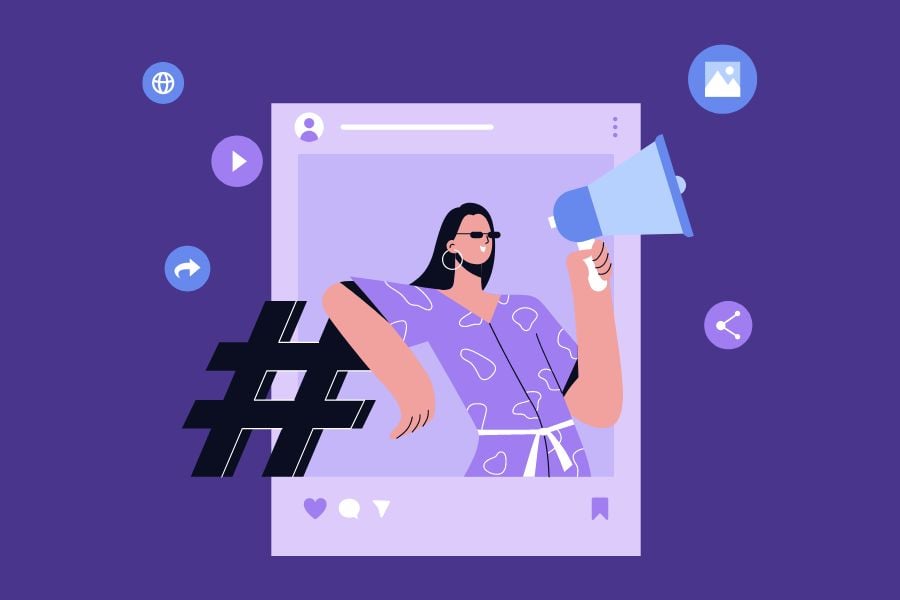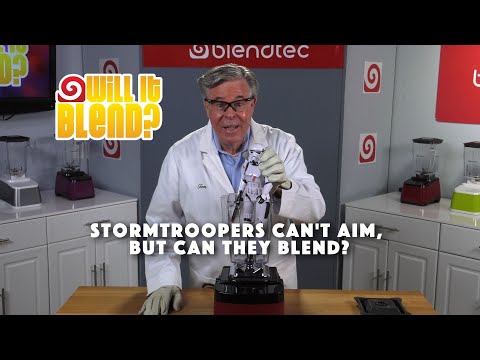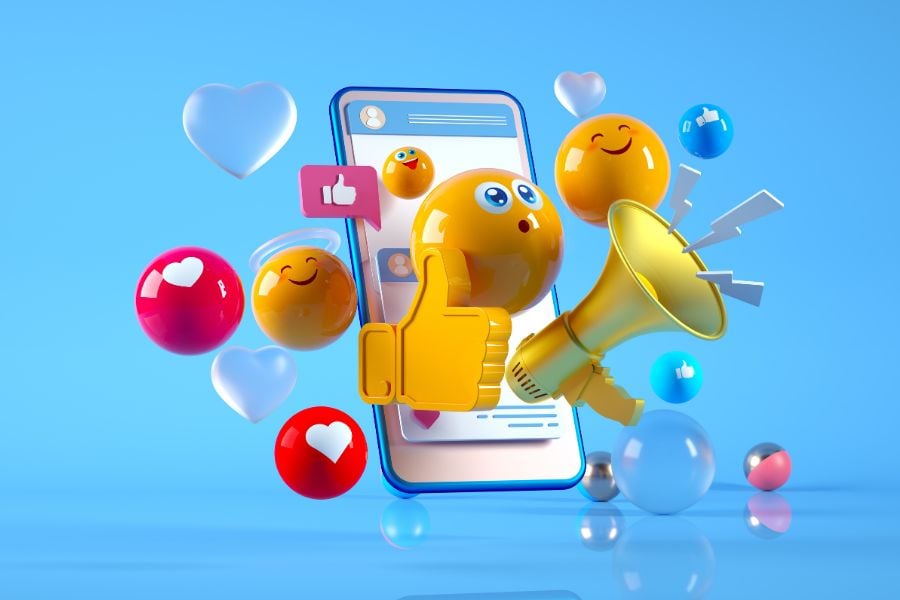Curious about how viral marketing became a sensation?
Or perhaps considering it for your own brand?
The appeal of viral marketing is no secret. After all, who wouldn’t want their content to be the next trending topic, driving masses of engagement, shares, and buzz?
In this guide, we’ll explore the ins and outs of viral marketing, uncover its historical context, dissect real-world examples, and arm you with actionable viral marketing techniques to create your own buzz.
Ready to unleash the potential of your digital marketing campaigns?
Let’s dive right in!

What is Viral Marketing & How Does it Work?
You’ve heard the term “viral marketing” thrown around, but what exactly does it mean?
Viral marketing, at its core, is a strategy that banks on the power of social sharing to spread a brand’s message like wildfire.
It’s like catching a common cold, but in a good way: one person gets it, then their friends, and before you know it, it’s all anyone can talk about.
But how does this work in the digital marketing world?
Think of it this way: you create a compelling piece of content — a video, a meme, an article, anything that packs a punch.
This content must be so engaging, so emotionally resonant, or so incredibly useful that anyone who encounters it feels an irresistible urge to share it with their friends, family, and followers.
It’s the equivalent of word-of-mouth marketing on steroids.
Consider the famous “Dove Real Beauty Sketches” viral campaign as an example:
Dove created a series of videos where a forensic artist drew two portraits of several women: one based on their own descriptions of themselves and the other based on a stranger’s description.
The disparity between the two sketches emphasized how women often undervalue their beauty, resonating with Dove’s target audience on a deeply emotional level.
The result?
Over 114 million views in the first month, becoming the most viral video of all time.
Viral marketing isn’t just about reaching the masses, though.
It’s about reaching the right people — those who will engage with your brand, buy your products, and become your loyal customers.
Contrast this with traditional marketing, where you’re placing ads or sending direct mails to a target audience, hoping they’ll bite.
Viral marketing flips this on its head.
Instead of you reaching out, your audience does the job for you. They share your content because it’s interesting, valuable, or entertaining. It’s marketing that doesn’t feel like marketing, and that’s its superpower.
By leveraging the power of a social media platform and people’s natural desire to share what resonates with them, viral marketing can provide exponential exposure and generate impressive ROI for far less effort and cost than traditional marketing methods.
But remember, as powerful as viral marketing can be, it’s not a magic bullet.
It requires a deep understanding of your audience, a dash of creativity, and a hefty sprinkle of timing and luck.
Ready to explore more? Let’s dive deeper into the fascinating world of viral marketing.
What Are the Key Elements of Viral Marketing?

Successful viral campaigns need the following factors…
1. Social Currency
Social currency is all about creating content that makes the folks sharing it look smart, cool, or ahead of the curve.
After all, who doesn’t love sharing a piece of information that positions them as ‘in-the-know’?
As an example, remember when Blendtec first came out with the “Will it Blend?” series?
People who shared those videos came off as discoverers of this quirky and fun brand, enhancing their standing in their social network.
So whether they were consciously or subconsciously thinking of raising their social status by sharing something fun, the social currency of the ads definitely played a role in their actions.
2. Triggers
Next up in our viral marketing recipe is the idea of “triggers.”
Picture elements that link your content to common, everyday occurrences, nudging folks to think about your brand or message on the regular.
Anything from logos to jingles to a particular design or combination of colors can trigger the thought of particular brands in the minds of consumers.
Blendtec scored big on this front — every time someone saw a blender or, indeed, anything unusual they thought might fit in one, they were reminded of the “Will it Blend?” series.
Now, that’s some solid triggering!
3. Emotion
Nothing quite beats emotion when it comes to sharing content.
Ever watched a viral video that stirred up a storm of laughter, tears, or a case of the goosebumps?
Then you have experienced the potent pull of emotional content.
Back to Blendtec’s “Will it Blend?” series, they often blended items of emotional significance (like the iPhone) which provoked strong reactions of surprise and awe (and maybe a touch of guilt at watching someone destroy expensive products?), making the videos all the more shareable.
4. Public Visibility
We also have the concept of public visibility. In other words, the more visible a product or idea, the more likely it is to spark chatter.
The iconic Apple logo on the back of a MacBook? A perfect example.
McDonald’s Golden Arches, Nike’s swoosh, and Disney’s Micky Mouse are also examples of extremely recognizable icons that spark instant recognition when seen in public.
Public recognition is one reason why Blendtec had its logo prominently featured in all of its videos on purpose, in order to make their brand highly visible and easily recognizable.
5. Stories
Finally, the secret sauce that can catapult your content into the viral stratosphere are stories.
Humans are suckers for a good tale, and if your product or idea can be wrapped up in a compelling narrative, it’s got a one-way ticket to Shareville.
In the Blendtec example, the company didn’t just sell a blender; it told a story of extraordinary capability and resilience through the action of blending unthinkable items.
It was more than a sales pitch; it was a conversation starter.
So Why Choose Viral Marketing? The Pros & Cons

Viral marketing can feel like catching lightning in a bottle; when it hits, it hits big. But like any marketing strategy, it has its highs and lows.
Let’s explore the pros and cons to help you determine if it’s the right fit for your brand:
The Pros
- Budget-Friendly Buzz: Viral marketing is a way to generate a tremendous amount of buzz without draining your marketing coffers. No big-budget ad campaigns necessary here, folks!
- Organic Reach: Viral marketing allows you to reach a large audience organically, sidestepping the intrusive feel of traditional advertisements. It’s all about engaging content, not aggressive sales pitches.
- Trust and Credibility: People are more likely to trust a friend’s recommendation than a corporate advertisement, making viral marketing a potent tool.
- Increased Brand Awareness: Successful viral marketing campaigns can significantly boost brand visibility and recognition. You’re not just selling a product or service; you’re creating brand enthusiasts.
- Increased Customer Engagement: Viral marketing encourages interaction, leading to increased customer engagement. When people are commenting, liking, and sharing, they’re connecting with your brand.
The Cons
- Unpredictable Results: Viral content can be unpredictable. Not all attempts at viral marketing will succeed, and there’s no foolproof formula for virality.
- Not All Attention is Good Attention: A poorly received campaign can backfire spectacularly, leading to negative attention.
- It’s Not for Everyone: Viral marketing isn’t a one-size-fits-all solution. Some brands or products might not align well with the viral approach, or their target audience may not respond as expected.
- Limited Control: Once your content is out there, it’s out there. You can’t control how it’s shared or interpreted, and your message can sometimes get lost in the process.
- Short Lifespan: Viral content often has a short lifespan. It can explode in popularity and then quickly fade away as people move on to the next big thing.
In weighing these pros and cons, it’s crucial to consider not just the potential gains, but also the challenges you might encounter along the way.
But what if you’d like to launch your very own campaign?
How to Launch a Successful Viral Marketing Campaign in 2024

Creating a viral marketing campaign isn’t like following a well-trodden recipe; it’s more like whipping up a gourmet dish from scratch.
Let’s break it down into digestible bites…
1. Understand Your Audience
Your viral marketing quest starts when you delve deep into your audience’s psyche.
What piques their interest? What gets them riled up? What makes them laugh or cry?
Content that goes viral is content that resonates.
2. Create Magnetic Content
Now that you’re an expert on your audience, it’s time to put that knowledge to use.
Create content that’s interesting, relatable, and valuable. Sprinkle in elements of social currency, triggers, emotion, public visibility, and storytelling.
Remember, your ultimate goal is to make it share-worthy, so create content that people will want to share.
3. Master Social Media Platforms
Social media is the engine that powers viral marketing.
Twitter, Facebook, Instagram — they’re your launchpads, while hashtags are your secret weapon.
Combined, these platforms and symbols can help group and identify your content, helping it spread like digital wildfire.
4. Leverage the Right Tools
Remember, there’s no need to do all of this manually.
Viral marketing tools like BuzzSumo can help you spot trending content ideas.
Canva can assist you in designing eye-catching visuals.
And Hootsuite? It’s like your personal social media manager, scheduling posts for maximum visibility.
5. Seeding Your Content

Think of yourself as a gardener, and your content as seeds. You want to plant these seeds where they’ll grow best.
That could be in social media groups, discussion forums, or in collaboration with influencers.
Your target audience hangs out in these digital spaces, ready to discover and share your content.
6. Measuring Success
Going viral isn’t the end game — it’s achieving your campaign goals.
Did you reach the right people? Did you boost your brand visibility or drive sales?
Analytics tools can help you gauge how your campaign performed and offer valuable insights for your next attempt.
7. Keeping it Real
Finally, don’t forget the secret sauce — authenticity.
The internet-savvy audience can sniff out insincerity faster than you can say ‘viral.’ Be genuine, be transparent, be human.
The bond you’ll forge with your audience will outlast any viral campaign.
And now you know what ingredients make for a potentially viral marketing campaign. Now that you’ve got your game plan, it’s time to make some waves!
Embrace the Power of Viral Marketing
Making a splash in the digital world can feel like swimming against the current.
A good marketer is constantly thinking, “How can my content cut through the noise?”
Well, you’ve taken a vital step by checking out this guide.
Try out some of these viral marketing strategies for your brand, and you’re on your way to creating buzzworthy content.
Remember, each social share, each click is a step towards going viral.
You’ve got the viral marketing tools, and now it’s time to use them. So, go ahead, dive in. Your viral success story is waiting to be written.





